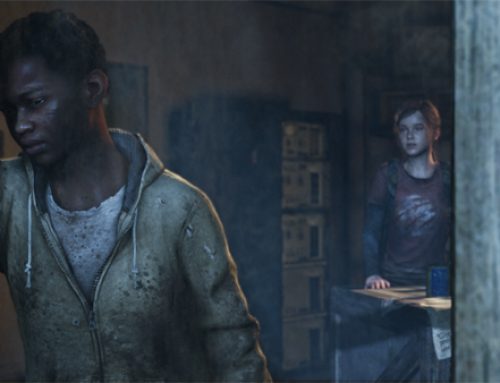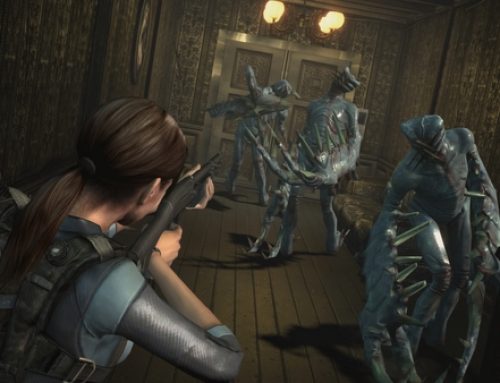SPOILER ALERT: This blog post revolves around “Broken Steel,” the new downloadable content for “Fallout 3” that continues the game’s story beyond its original ending. In the course of reviewing “Broken Steel,” I’ll be discussing the conclusion of “Fallout 3” as well as how “Broken Steel” reworks it. I also briefly touch upon the plot of “Fable II.” While I won’t go into specifics, some of what I discuss could spoil plot elements for those who haven’t completed it.
As gamers reached the end of Bethesda Softworks’ post-nuclear role-playing adventure “Fallout 3” last fall, it was nearly impossible to escape criticism of the game’s controversial ending. Bethesda ran afoul of many players because the open-world game failed to adhere to a design convention that’s become nearly standard in large, open-world games: “Fallout 3” actually ended.
Unlike Rockstar Games’ “Grand Theft Auto” series or Bethesda’s own swords-and-sorcery epics, “Fallout 3” did not allow players who’ve completed its core story to go back and complete side quests, explore every last nook and cranny or unlock every achievement. In fact, depending on how you played the game, your character may very well have died.

“Broken Steel,” the third, $10 downloadable add-on for PC and Xbox 360 players of “Fallout 3,” attempts to address complaints about the ending as well as the contention that the game’s level cap of 20 was too low. But did these issues need fixing to begin with?
As I said back when I reviewed the game, the ending of “Fallout 3” was clunky and inelegant. But the narrative decision to kill the hero was a welcome departure from the usual, victory-lap endings so often found in games. In my playthrough, I chose to trade the life of the character I’d sunk dozens of hours into building so that other residents of the nuke-blasted Capital Wasteland might live better lives. My decision dovetailed perfectly with the game’s persistent humanist message that strong-willed, like-minded individuals are capable of coming together to ensure humanity endures even in the bleakest of circumstances.
At the beginning of “Broken Steel,” however, players who made the same choice I did will discover that no sacrifice was made at all. In the name of continuity, your character’s death has been commuted into a near death and subsequent coma, from which you’ve just awakened. Because of this, I initially regarded “Broken Steel” as a moment of weakness for Bethesda, a capitulation to a bunch of whiners who want every game to be the same and who didn’t appreciate how well the decision to turn the main character into a martyr meshed with “Fallout 3’s” narrative and thematic arcs.
In a way, I still think this, but I’m willing to admit I might be wrong. In fact, the first thing I found myself doing when I fired up “Broken Steel” was not tackling the new quests, but wrapping up unfinished business from my first playthrough.
Once you dive into “Broken Steel” and begin helping some of your allies from the main game conduct mop-up operations, it’s easy to set aside any misgivings about narrative sleights of hand. The three primary quests are as gripping and fun to race through as the missions from the end of the main game.
You’ll take part in large-scale battles, trudge through tunnels crawling with new, lethal enemies, infiltrate heavily fortified enemy positions and wield a new superweapon. In addition, there are at least three new side quests you can take part in that let you see some of the tangible results of your efforts the first time through the game.
The raising of the level cap to 30, along with the addition of new abilities you can unlock, lets you feel like you’re still progressing, but characters will be nearly maxed-out on their skills and so over-powered by level 23 or so that most enemies simply won’t feel like much of a challenge. Bethesda balances this somewhat by adding a handful of tougher foes, but you still might find yourself tweaking the difficulty settings.
I’m still troubled by the idea that a game developer would make a bold narrative decision to allow players to sacrifice a protagonist’s life for the benefit of humanity, only to later render that sacrifice moot by declaring in a $10 download that the sacrifice didn’t really happen at all. Lionhead Studios, developer of “Fable II” for the Xbox 360, did something similar in that game, in which the “Knothole Island” expansion allowed characters to resurrect a popular character who, depending on how you played the game, may have been sacrificed in the name of the greater good.
Hopefully the idea of using downloadable content to reverse bold narrative choices every time fans of the game make a little noise doesn’t become a trend. There’s wanting to please your fans (good), and there’s betraying your artistic vision (bad). “Broken Steel” falls into a middle ground. It’s lame that my character’s selfless act was nullified, but the ending was a mixed bag as originally written, so tampering with it bothers me less. What I don’t want, though, is for the people who write stories for video games to shy away from narratives that challenge, shock and, yes, disappoint gamers. Shakespeare killed off Romeo and Juliet in the name of good art. We deserve no less in gaming.




